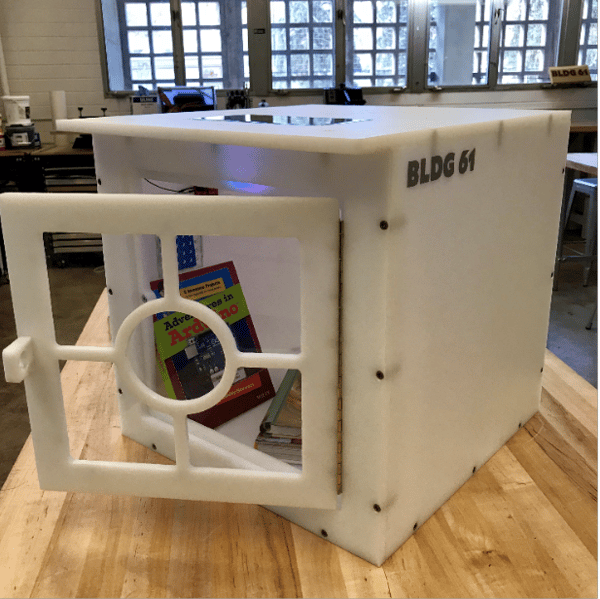Schools and districts across the nation are developing and implementing models of innovation to increase the number of students who are ready to engage in STEM fields, both in the workforce and as a course of study. The intention of this series is to share replicable and scalable models of innovation in the hopes that they can inspire, support, and help other educators cultivate their own plans.
My name is Zack Weaver and I’m a Creative Technologist at BLDG 61. Together with my teammates, Adam Watts and Janet Hollingworth, we run a free, public makerspace inside the Boulder Public Library. Along with the usual fare (laser cutters, CNC routers, woodshop, sewing machines and, yes, 3D printers) we have a full sweeeet electronics bench where the public can try out various boards, sensors and motors free of charge. We are there to help them every step of the way, no matter their experience level. Our electronics bench, available every week during our “Drop-In” hours, is loaded with supplies. Many of which are from SparkFun.

Little Free Libraries

The best project we ever ran that included electronics was our Free Little Libraries camp in collaboration with the I Have a Dream Foundation. About 12 local Latinex youth had to design, build and install two little libraries in different locations. Each design included a solar powered LED light in 3 separate “rooms” in the little library Students had to solder the LEDs in parallel and wire them through the structure back to a Sunny Buddy. That was hooked up to a 3.5v solar panel charging a 6000mAh LiPo battery, all from SparkFun. Each room had its own lights so the communities could exchange books after dark.
One of the greatest individual accomplishments came from a young woman named Alex who had done a previous camp with us and really excelled in electronics. She led the electronics team for both locations, teaching them to solder and hookup the electronics. Alex went on to get a 99% scholarship at a local private high school and has since become an assistant to their director of technology.
Classes
We’ve used SparkFun products for various public classes. Among the many STEAM programs within the greater Boulder Public Library organization, “Youth Maker Hangout” teaches coding using Scratch. The SparkFun Digital Sandbox is a fun way to play with Scratch for those kids that are more engaged by hardware than software alone.
At BLDG 61 we run a small series called “Robots! 00, 01 and 02”. 00 is about basic digital/analog programming with the Redboard and various buttons and sensors. 01 adds motor control with DC, servo and stepper motors where we introduce the Big Easy Driver to explain stepper control. The third class, 02, throws in some mechanical linkages. This is a relatively fast and easy way to get people from zero (no pun intended) to basic electromechanics. Robots!
Shop Projects
The simple fact is SparkFun is also our local electronics store. If we order online parts are usually available the same day. It’s never more than the next day. So naturally, when combined with the accessibility of SparkFun tutorials and the natural support of the open-source hardware community worldwide, we solve a lot of problems quickly with SparkFun hardware.

Our CNC machine has a powered safety curtain with some pretty beefy stepper motors, limit switches and arcade button controls all managed by a Pro Mini microcontroller. The electronics bench features addressable LEDs under the shelves for lighting with style that run on a Redboard. The Redboard also runs the lightning flash in the background of our USB graveyard. (BLDG 61 is where USB memory sticks enter the underworld, a.k.a. are forever left behind.) All good things!


makerspace, Guest Post